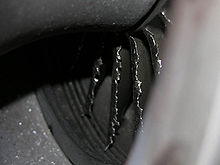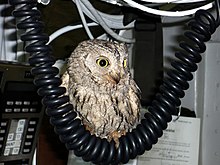
Back ضرر جسم غريب Arabic Foreign Object Damage German آسیب جسم خارجی FA Débris (aéronautique) French נזקי גוף זר HE Oštećenje zrakoplova stranim objektom Croatian Serpihan benda asing ID FOD (航空用語) Japanese Foreign object damage Swedish Yabancı madde hasarı Turkish



In aviation and aerospace, the term foreign object damage (FOD) refers to any damage to an aircraft attributed to foreign object debris (also referred to as "FOD"), which is any particle or substance, alien to an aircraft or system which could potentially cause damage to it.[1]
External FOD hazards include bird strikes, hail, ice, sandstorms, ash-clouds or objects left on a runway or flight deck. Internal FOD hazards include items left in the cockpit that interfere with flight safety by getting tangled in control cables, jam moving parts or short-out electrical connections.